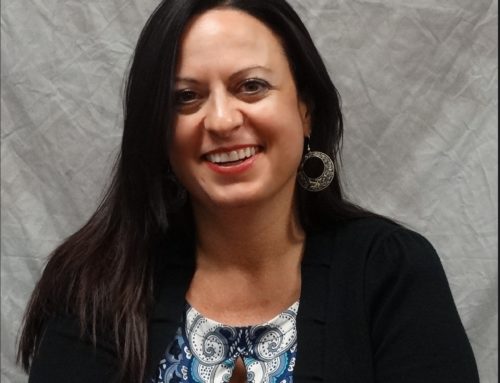By James Wiegel
 A big part of what we do as ToP facilitators is to create the events, meetings, planning retreats, summits, annual gatherings, even short conversations that engage a group of people significantly with some question or task they are facing and then help them come to a conclusion or way forward. Often, the key to success is the courage and conviction of the person who hires us to make this happen and to trust us and our beloved ToP methods to craft a compelling and effective process. As facilitators, we have support, guidance and resources – courses, websites full of tools and methods, our community of practice, the ToP Network, associations, books, etc. Those who hire us, I will call them ‘champions’, however, seem to have far less targeted support and resources available to them. Yet, each of us can tell stories and cite cases where these champions – team leaders, department managers, organizational leaders, and community care takers – were essential in making participation work. Perhaps they used an outside facilitator / facilitated themselves / developed their own in house facilitators, or simply built spirit and momentum around a task or mission to produce results. This is always exciting to see. Yet, too often we also find ourselves in a situation when a new leader comes in and it all falls apart, or the board changes and participation goes out the window. We have also heard the stories from fellow in-house facilitators and the complexities they face in actually applying, in the day to day of their organizations, these participatory methods of conversation, decision making, and planning. Sometimes being a ToP practitioner who has their own business, gets hired, goes in and makes the methods magic then leaves to look for the next client can feel absent of some of the deeper organizational transformational challenges and opportunities.
A big part of what we do as ToP facilitators is to create the events, meetings, planning retreats, summits, annual gatherings, even short conversations that engage a group of people significantly with some question or task they are facing and then help them come to a conclusion or way forward. Often, the key to success is the courage and conviction of the person who hires us to make this happen and to trust us and our beloved ToP methods to craft a compelling and effective process. As facilitators, we have support, guidance and resources – courses, websites full of tools and methods, our community of practice, the ToP Network, associations, books, etc. Those who hire us, I will call them ‘champions’, however, seem to have far less targeted support and resources available to them. Yet, each of us can tell stories and cite cases where these champions – team leaders, department managers, organizational leaders, and community care takers – were essential in making participation work. Perhaps they used an outside facilitator / facilitated themselves / developed their own in house facilitators, or simply built spirit and momentum around a task or mission to produce results. This is always exciting to see. Yet, too often we also find ourselves in a situation when a new leader comes in and it all falls apart, or the board changes and participation goes out the window. We have also heard the stories from fellow in-house facilitators and the complexities they face in actually applying, in the day to day of their organizations, these participatory methods of conversation, decision making, and planning. Sometimes being a ToP practitioner who has their own business, gets hired, goes in and makes the methods magic then leaves to look for the next client can feel absent of some of the deeper organizational transformational challenges and opportunities.
Along comes the book, Reinventing Organizations by Frederic Laloux. Laloux, who is Belgian, looked around and found a dozen or so examples of organizations that were different. Organizations who were successful over time installing describable practices, structures and ways of operating that support and sustain a higher level of functioning as an organization (in ToP we would say a higher level of participation, Laloux uses the language of integral leadership, talking about a “teal” organization ~ read the book to find out what THAT is). The book is worth a read and a study which is what we did. We organized a group via Free Conference Call that included folks from across the US, Canada, and Asia in weekly calls. Google the book. Browse the simple website we used https://wedgeblade.net/wordpress/studygroup/
31 people showed interest in our study group and 7 – 10 were active over several months. The book describes in practical terms (structures,  practices, established policies and roles) a different way of operating as an organization, one that treats the organization and its connections as a living system and encourages and supports self-management over heirarchical control. Key concepts include bringing the whole self to work and listening to evolutionary purpose. Two of my take aways from the study:
practices, established policies and roles) a different way of operating as an organization, one that treats the organization and its connections as a living system and encourages and supports self-management over heirarchical control. Key concepts include bringing the whole self to work and listening to evolutionary purpose. Two of my take aways from the study:
- The desire to learn everything possible about these amazing companies and the possibilities for the future, not only of companies themselves but of society in general.
- The “Teal” lens. I am interim chair of a board for a nonprofit organization. I started trying to see the operation of this organization through the teal lens. It helped me grow more comfortable about some of the operations and shift my focus to areas where it fails to support the mission. The study makes me think about this organization in a different way.
Overall this experience calls forth a challenge to us as facilitators. Lets think about the managers, team leaders, organizational leaders who hire us, and how we can support them not just in moments of effective participation, but also in installing practices, procedures, and, yes, even legal structures that help to sustain more effective levels of interaction and help ToP and the sort of momentum these methods can release to take root and grow strong.




Leave A Comment